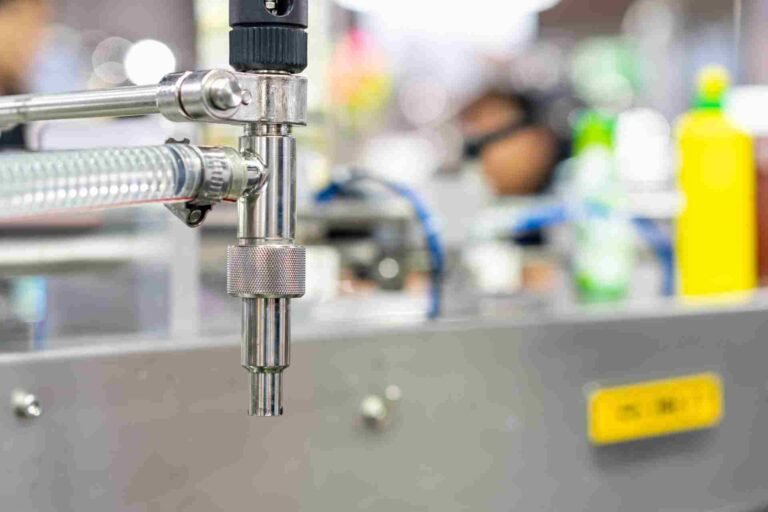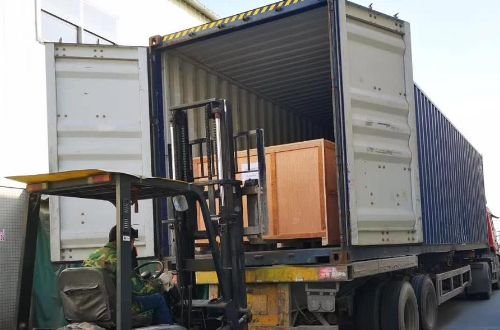Automating the packaging process for liquids such as sauces, paste, creams, gels, cosmetics and water can significantly improve efficiency and reduce the risk of contamination.
Using modern, flexible packaging machines, liquid pouch packaging can be done quickly, cleanly, and efficiently.
Suppose you are looking for liquid packaging solutions to automate your liquid pouch packaging process. In that case, your packaging equipment manufacturer or integrator should know some critical information to provide the most suitable liquid packing machine for your specific needs.
To ensure the success of your project, it is crucial to plan carefully and consider all the details beforehand.
Viscosity

Viscosity is a measure of a fluid’s resistance to flow and is often used to describe the “thickness” or consistency of a liquid product.
Fluids with higher viscosity, such as molasses or icing, have greater internal friction and do not flow as easily as fluids with lower viscosity, such as water or corn oil.
The liquid viscosity can be measured using specialized equipment or a simplified formula, with the result usually expressed in centipoise (cps).
In the consumer packaged goods (CPG) industry, viscosity can affect the rate at which a liquid product flows through a pipe, the time it takes to set or dry, and the time it takes to dispense the product into its packaging.
When choosing a liquid packing machine, it is crucial to determine the product’s viscosity accurately. This will select the type of filler needed to effectively and efficiently fill the packaging without overfilling.
The filler must provide the proper force to induce flow, but only a slight pressure that would cause the packaging to overfill.
Filling temperature

When heated, most liquid products become more fluid and flow more readily. This is because as a liquid is heated, its molecules begin to move faster and faster, which can cause the forces that bind the molecules together to weaken.
This results in a more free-flowing liquid. Heat can also cause a decrease in surface tension, further reducing the liquid’s viscosity.
The filling temperature of a liquid product is an important factor to consider when configuring a packaging line, especially regarding the product filler.
The filling temperature can affect the efficiency and effectiveness of the filler and the overall packaging process.
Accurately determining the filling temperature of the liquid product is essential for selecting the appropriate packaging equipment. More than incorrect filling temperature information can lead to selecting equipment unsuitable for the product’s specific needs, resulting in malfunctions and problems during the packaging process.
To ensure the success of a liquid packaging project, it is important to accurately determine and communicate the filling temperature of the product to the packaging equipment manufacturer or integrator.
This will allow them to provide the most suitable and efficient packaging solution for the product’s specific needs.
Size of the liquid

Liquids such as salad dressings, soups, and sauces often contain particulates, typically small pieces of spices or other flavorings. These particulates can be suspended in the liquid product or settle toward the bottom of the fluid.
When packaging liquids with particulates, it is important to carefully consider and accurately describe their average size and general properties.
The presence of particulates in a liquid product can affect the selection of a product filler for the packaging process. Different fillers may be better suited for handling different sizes or properties of particulates.
It is essential to accurately communicate the presence and characteristics of particulates to the packaging equipment manufacturer or integrator to ensure the selection of a filler that can accurately and effectively dispense the product without obstruction.
To achieve the most accurate and efficient liquid packaging solution, it is important to carefully consider and accurately describe the presence and characteristics of particulates in the product.
This will allow the packaging equipment manufacturer or integrator to choose the most suitable filler for the product’s specific needs.
Prevent Leakage

Leaking pouches can cause problems by dripping liquid on other bags, leaching through retail cartons, and leaving a residue on other finished goods.
This can be costly for the brand and the customers as it may require rework to find the leaking pouch, clean the affected interests, and dispose of any damaged cartons. Rework in these situations can be complex and challenging, making it essential to prevent leakage in the first place.
To prevent leakage during liquid packaging, it is important to:
- Check the ingredients in the liquid to ensure they will not damage the sealant layer in the packaging material.
- Use a film structure that can provide strong barrier protection for the liquid and has a robust sealant layer, especially for stubborn liquids.
- Request a “waffle” pattern on sealing jaws and regularly clean the Teflon tape on the sealing bars to ensure a secure and high quality seal.
- Consult with a film expert and consider using a thicker sealant layer for stubborn liquids.
- Regularly inspect and clean packaging equipment to prevent residue build-up and ensure a high-quality seal.
Following these steps can significantly help prevent leakage and ensure the success of your liquid pouch filling project.
Conclusion on liquid packaging solutions
In this blog post, we have discussed some essential considerations for liquid packaging. These include viscosity, filling temperature, liquid size, and packaging material type.
It is important to accurately determine and communicate these factors to the packaging equipment manufacturer or integrator to ensure the selection of the most suitable and efficient packaging solution for the product’s specific needs.
By carefully planning and considering these details, you can improve the efficiency and success of your liquid packaging process.



